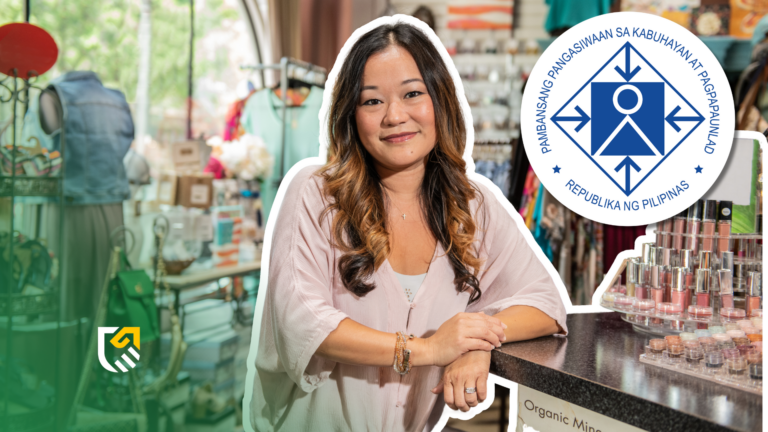Key Takeaways
To start a travel agency in the Philippines, you must legally register the business, secure permits, build a supplier network, and establish a strong online presence.
- Register with DTI/SEC, BIR, and get local permits (Mayor’s).
- DOT accreditation is optional but strongly boosts client trust.
- Build a reliable network with hotels and tour operators.
- Prioritize a professional website and active social media marketing.
The Philippine tourism sector is roaring back to life, creating an excellent opportunity for aspiring entrepreneurs to start a travel and tours business. Filipinos are once again seeking adventures, from relaxing staycations to exhilarating international trips, and a dedicated travel agency can be their trusted partner in navigating these journeys with ease.
But building such an agency involves more than just marketing; it necessitates proper licensing, strategic digital investments, and a tailored business model. This guide offers a comprehensive blueprint on how to start a travel agency in the Philippines with confidence and strategic foresight.

What Does a Travel Agency Do?
Travel agencies are instrumental in simplifying the complexities of travel, offering a core suite of services that includes:
- Flight and hotel reservations
- Bespoke tour packages and itineraries
- Visa application support and travel insurance
- Corporate and group travel solutions
When setting up your agency, you have the flexibility to choose a home-based operation—excellent for cost efficiency—or a comprehensive, full-service office. Furthermore, you can carve out a specific market by specializing in areas like:
- Eco-tours, catering to nature lovers
- Senior travel, designed for older adventurers
- Luxury travel, delivering exclusive high-end experiences
How to Start a Travel Agency in the Philippines
Now that you know what a travel agency does, you can start mapping out what niche you want to focus on. Here’s how you can start a travel and tours business in the Philippines.
Step 1: Legally register your travel and tours business
Before you can offer any services, you must legalize your operation. This involves several registrations:
- Business name registration
- Sole proprietorships: Register with the Department of Trade and Industry (DTI).
- Partnerships or corporations: Register with the Securities and Exchange Commission (SEC).
- Local permits – Obtain the necessary clearances from your local government units:
- Barangay business clearance: Secure this from your local barangay hall.
- Mayor’s permit: Apply at your city or municipality’s Business Permits and Licensing Office.
- Bureau of Internal Revenue (BIR) registration – This step involves securing your Tax Identification Number (TIN), registering your books of accounts, and applying for the authority to print receipts.
- Department of Tourism (DOT) Accreditation – While optional, DOT accreditation is highly recommended. It boosts client trust, demonstrates adherence to national service standards, and grants access to valuable industry events and networks. Fees typically range from ₱1,000 to ₱3,000, depending on your business classification.
- (Optional) International Air Transport Association (IATA) membership – If you plan to directly issue international flight tickets, IATA membership provides access to global airline networks. Be aware that this process is more complex, often requiring a financial guarantee and office inspections.
Step 2: Set your budget and startup capital
Launching a travel and tours business in the Philippines requires careful financial planning. Here’s an overview of typical initial expenses:
| Expense Category | Estimated Cost (PHP) | Considerations |
| Office Equipment | ₱30,000 – ₱60,000 | Computers, printers, and other necessary devices |
| Workspace Setup | ₱10,000 – ₱50,000 | For either a home office or a commercial rental |
| Business Registrations and Permits | ₱5,000 – ₱10,000 | Government fees for legal operation |
| Technology and Booking Systems | Varies (some commission-based) | Online platforms, CRM, and specialized software |
| Initial Marketing | ₱3,000 – ₱10,000/month | Website development, digital ads, and promotion |
| Personnel Costs | Optional | Dependent on whether you hire staff immediately |
*Costs in the Philippines can vary significantly by location (Metro Manila vs. provinces), specific LGU, business size, and the year. The figures provided in the table are good estimates for planning purposes, but a real entrepreneur will need to get exact quotes for their specific situation.
Pro Tip: Many successful travel agencies begin small, often as a solo venture, and grow organically. Prioritize essential investments and scale up as your business thrives.
Step 3: Build your network and supplier list
Your travel agency’s success and income are directly tied to the quality and variety of travel services you can offer. Therefore, you must establish robust partnerships. Focus on collaborating with:
- Accommodation providers: Hotels, resorts, villas, and guesthouses (both local and international)
- Transport services: Airlines, bus companies, ferry operators, and car rental agencies
- Activity and tour operators: Local guides, adventure tour organizers, and specialized experience providers
- Travel consolidators: These partners can offer more competitive booking rates and a wider inventory
Effective connection-building involves active participation in industry events like travel expos, DOT networking events, and trade fairs. Additionally, joining tourism associations such as PHILTOA, PTAA, or NAITAS can provide valuable inroads.
For direct partnerships, small business owners should reach out to hotels, resorts, and tour operators to negotiate commission-based deals, commonly ranging from 10–20% for tour packages and hotels, a figure that may fluctuate based on the specific service and volume.
Pro Tip: Always document all partnership terms clearly. Pay particular attention to cancellation policies, payment timelines, and commission structures to prevent future misunderstandings.
Step 4: Build a strong digital presence
You need a robust digital presence for your small business travel agency; without it, many customers simply won’t find you. Prioritize digital visibility immediately.
Begin by creating a website that showcases your packages, itineraries, and pricing, and includes easy-to-use contact and inquiry forms. Affordable platforms like Wix, WordPress, and Shopify (with plans generally from ₱300 to ₱1,500 monthly) are excellent starting points.
Additionally, sign up on popular travel marketplaces such as Klook, TripAdvisor (via Viator), and Traveloka to reach a wider audience of eager travelers.
Finally, cultivate an active social media presence on platforms like Facebook, TikTok, and Instagram. Share engaging content, such as travel tips, client reviews, and promotions, and consider modest ad campaigns (like Facebook Ads from ₱3,000/month) to target specific demographics.
Remember that travel is highly visual. Use photos and videos to inspire and convert.

Earn Your Wings
The Philippines’ resurgent tourism sector makes this an exceptionally opportune time to launch a travel agency. With the proper licenses in place, partnerships secured, the right digital tools acquired, and strategic marketing efforts, your passion for travel can blossom into a flourishing small business.
Success hinges on staying true to your niche, prudently managing initial expenses, and cultivating enduring industry relationships.
If you find yourself in need of capital to scale up, Unicapital stands ready to assist. We provide flexible business loans for Philippine entrepreneurs, perfect for investing in essential equipment, powering your digital ad campaigns, or expanding your dedicated team.
Let Unicapital help you chart your business’s next adventure. Apply for a business loan today.
Frequently Asked Questions (FAQs)
First, register your business name with the DTI (sole proprietorship) or SEC (corporation/partnership). You must then secure a local Barangay Clearance and the Mayor’s Permit from your city or municipal hall.
No, it is technically optional, but the article highly recommends getting DOT accreditation. It significantly boosts client trust, demonstrates adherence to national service standards, and provides access to industry networks.
nitial expenses can range widely, but a basic setup for equipment and permits is estimated to cost between PhP 45,000 to PhP 120,000. Prioritize essential investments and scale up as the business grows.
Agencies primarily earn money through commissions negotiated with various suppliers, such as hotels, resorts, and tour operators. These commissions commonly range from 10% to 20% on bookings and tour package sales.
Building a strong digital presence is crucial. This includes creating a professional website to showcase packages and maintaining active social media accounts (Facebook, Instagram) to share engaging, visual content.







